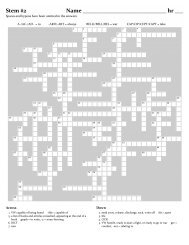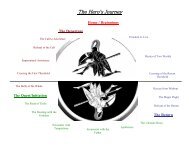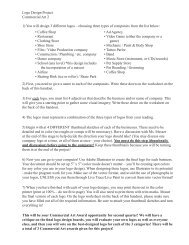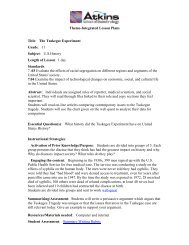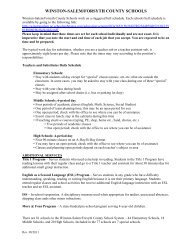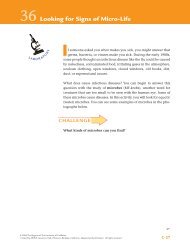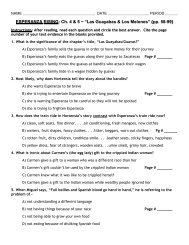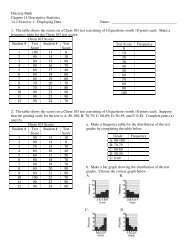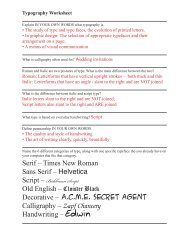World War One
World War One
World War One
- No tags were found...
You also want an ePaper? Increase the reach of your titles
YUMPU automatically turns print PDFs into web optimized ePapers that Google loves.
In 1914, the airplane was only 11 years old. Airpower was just beginning to find its place. The airplanes were slow, flimsy contraptionswith barely enough power to lift a single pilot and maybe a passenger. The first propeller planes were used for photo reconnaissancemissions. Some pilots tried throwing hand grenades, bricks, or even long ropes with grappling hooks at other planes below them.The romance of the flying aces engaged in individual combat (called dogfights) with the Germans (the Red Baron,Baron Manfred von Richthofen) was different from the reality. The reality was newly recruited pilots sent to theskies who barely understood how to fly (less than five hours of training). It was unusual for a new pilot to survive thefirst few weeks of his duty. Pilots fell victim to the enemy, bad weather, mechanical problems, loss of control due topilot error, pilots became lost, ran out of fuel over enemy lines, many were shot down. British pilots were notallowed to carry parachutes because their military leaders believed it was cowardly.Airplanes were a psychological weapon more than a practical one, but by the end of the war planes had a rapidimprovement in design, speed, safety, maneuverability, and stability, and they were now equipped with machine guns.Chemical warfare was seen on a large scale for the first time with results so gruesome that most countries vowed never to use theseweapons again. Poison gases (mustard gas, chlorine gas, phosgene) made the eyes water, blistered the skin, and clogged the lungs.This was the first widespread use of chemical warfare which caused a brutal, slow, painful death and was feared. Eventually thesoldiers were issued gas masks.The Haber-Bosch process of nitrogen fixation was a reaction of hydrogen plus nitrogen over an iron substrate which producedammonia. Ammonia is difficult to produce on an industrial scale but is used for explosives and gunpowder. By 1910, the Germanchemical company BASF created a way to make this right on the battlefield. The Allies had to buy all of their supply from Chile.http://en.wikipedia.org/wiki/Technology_during_<strong>World</strong>_<strong>War</strong>_Ihttp://techcenter.davidson.k12.nc.us/group9/tech.htmhttp://www.ieeeghn.org/wiki/index.php/<strong>World</strong>_<strong>War</strong>_I_Technologyhttp://www.bbc.co.uk/history/worldwars/wwone/The <strong>War</strong> At SeaControlling the sea lanes was crucial to battles and Great Britain needed her coloniesto transport food, munitions, raw materials, or soldiers. The navy could form a blockadeand starve out the other side.U-boats: Germans made 13,000 submarines, or u-boats (unterseebooten). These ships had to submerge to attack. They could firetorpedoes and sink ships from miles away. Germany conducted guerre de course (commerce raiding) against Britain with u-boatsbelow and Zeppelins above. The u-boats completely destroyed everything--all life, all supplies, all cargo. Rather than engage theenemy and take prisoners, the enemy was now completely destroyed. The British Naval leaders considered submarines to be cowardlyweapons.U-boats in the North Atlantic threatened the Black Sea and the British Isles. Many British died carrying vital supplies for the war as theu-boats nearly crippled the British navy. The u-boats seemed unstoppable, but by 1916 Great Britain had developed depth charges,hydrophones, and passive sonar.Under an international naval treaty signed in 1907, mining the North Sea was limited to areas within 3 miles of an enemy’s coastlines tonot endanger neutral ships. However both Britain and Germany ignored this agreement and the North Sea became a place of greatdanger to all ships that dared enter. The situation was problematic for the neutral countries of Norway and Sweden who needed theNorth Sea for commerce.20



